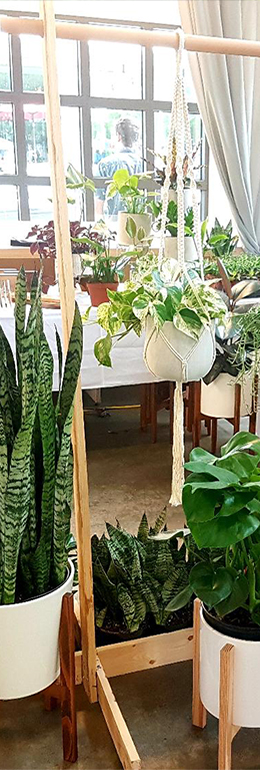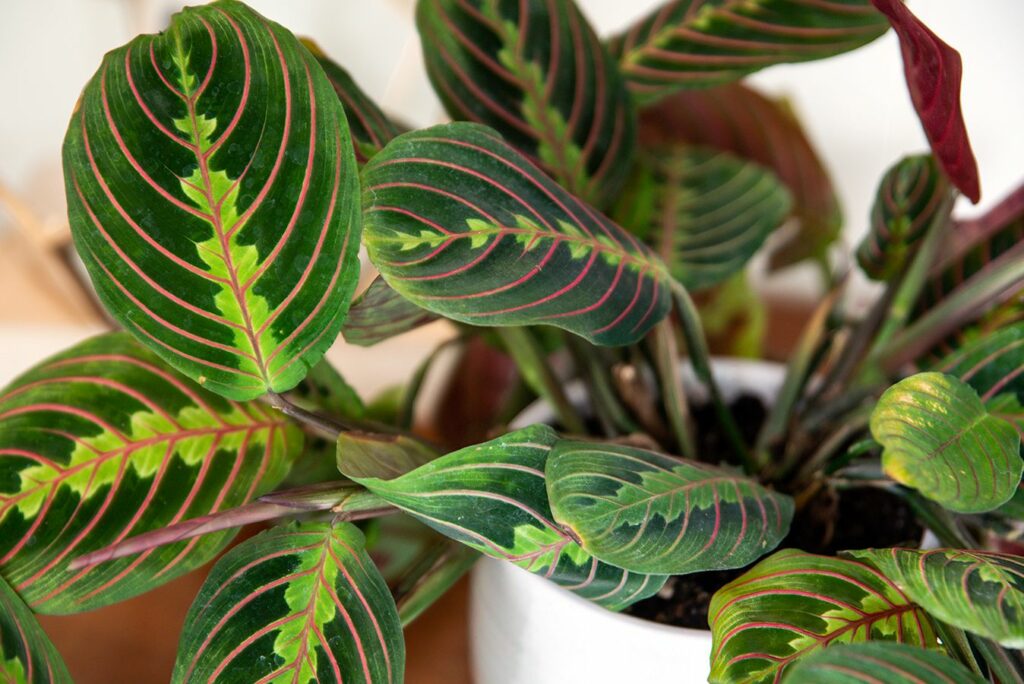Houseplants
How to Grow and Care for a Prayer Plant
How to Grow and Care for a Prayer Plant

Named for Bartolomeo Maranta, an Italian physician and botanist of the sixteenth century, the Maranta genus includes a few dozen low-growing plants native to Brazil, among them the prayer plant (Maranta leuconeura). It gets its common name from the fact that its leaves stay flat during the day and then fold up like praying hands at night.
The prayer plant is one of the most distinguishable tropicals, thanks to its beautiful decorative leaves. The popular tricolor variety has deep green, velvety leaves with yellow splotches down the midrib and arching red veins traveling to the leaf margins. A slow-grower, the prayer plant can eventually reach up to a foot in height indoors. They are fairly common as houseplants and can be planted and cared for indoors during any time of the year, but they’re not necessarily easy to keep growing over the long term.
Prayer Plant Care
Prayer plants are low-growing, spreading plants that thrive best when provided with greenhouse-like conditions, including warm, moist, gentle airflow, and plenty of fertilizer. Plants that are kept too cool or too dry are likely to lose their leaves or suffer from fungal infections that can cause the plant to die from root rot or collapse. Likewise, plants that are exposed to too much sun can become washed out and develop brown blotches on their leaves.1
Light
Hang or set your prayer plant near a window where it will receive indirect sunlight. Never set your plant in direct sunlight because the sun will scorch the plant’s leaves or the leaves will develop blotches or patches and fade in color intensity. Prayer plants are generally tolerant of lower light areas. In the winter, when the plants go into dormancy (and sometimes die back completely), provide them with bright light to maintain growth.
Soil
Prayer plants can prosper in a variety of soils, so long as they’re well-draining. Typically, a traditional potting mix works fine, but you can make your own by combining two parts sphagnum peat moss, one part loamy soil, and one part perlite or coarse sand together. In addition, the soil should be acidic, with a pH of 5.5 to 6.0. To improve drainage, add rocks or gravel to the bottom of your pot and be sure that the pot has ample drainage holes.
Water
During their growing season, water your prayer plant frequently (whenever the top layer becomes dry) and never allow the potting soil to dry out completely. These plants are very susceptible to drought and will not survive long if left unwatered. However, to avoid fungal problems, do not let water sit directly on the leaves or let the plant get soggy. Both insufficient water and overwatering can cause the leaves to turn yellow and drop from the plant.2 When watering your prayer plant, use water that is at least at room temperature, if not slightly warm.
Temperature and Humidity
Prayer plants prefer normal household temperatures between 60 and 80 degrees Fahrenheit. Prolonged lower temperatures can damage the leaves and cause them to drop from the plant. Additionally, prayer plants thrive best in a very humid environment. To increase the humidity available to your plant, you can place a small humidifier nearby, or place the plant atop a tray that has been filled with small stones and water. You can also mist the leaves frequently with room temperature or slightly warm water.
Fertilizer
Fertilize your prayer plant every two weeks from early spring through fall (reducing to once a month in winter) with a water-soluble houseplant fertilizer diluted to half-strength. If you use too little fertilizer, your plant will grow slowly or hardly at all. However, too much fertilizer can burn the plant’s roots—its leaves will start to brown and the plant can even die.

FAQ
Are prayer-plants easy to care for?
Prayer plants are relatively easy to care for, though they prefer greenhouse-like conditions, which make be hard to achieve indoors in some areas.How fast do prayer-plants grow?
Prayer plants are considered slow growers and generally reach about 12 inches at their tallest.Can prayer-plants grow indoors?
Yes—in fact, prayer-plants will often grow most successfully indoors. They require very tropical conditions which can be hard to achieve outdoors in many parts of the country.

 العربية
العربية


